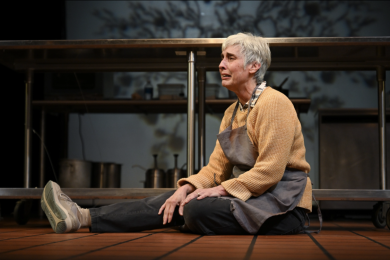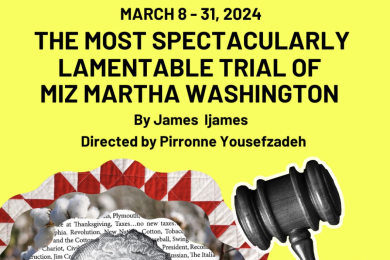Edna Awakens — to What?
The Awakening is often considered Kate Chopin’s best work—it is certainly her best-remembered—and like so many other visionary artists, she never lived to see its fame. In fact, its publication in 1899 led to her financial and literary ruin. Her protagonist Edna’s doomed struggle, to discover personal freedom within the confines of the Old South patriarchy, was judged by reviewers as sordid, selfish and melodramatic. But it’s since become recognized as one of America’s great novels for its multifaceted depiction of a rebellious female consciousness. Readers know that Edna will never attain her freedom, but through evocative prose, complex characters, and intriguing relationships, Chopin compels us to watch Edna try.
Which is, in a nutshell, what’s sorely missing from Savage Umbrella’s The Awakening, now playing at The Southern. Aspects of the novel lend themselves well to the adaptation; it’s a distinctive period piece, and the company creates a believable Victorian South. The actors wear pleasing combinations of linen, lace, baubles, and bowlers, and music director Nic Delcambre directs a fluid and ominous live score composed by Candy Emberley. In the first act the sixteen-person ensemble (yes, sixteen!) uses their bodies and voices to conjure Edna’s summer beach town, Grand Isle; there’s less of this in the second act, which takes place in a more reserved and austere New Orleans.
On Grand Isle, Edna’s gilded cage is established: she spends her days with her charming suitor Robert LeBrun (Nick Wolf) and her matronly companion Adele (Amber Davis). Her evenings are spent at elegant, vapid dinner parties, and later on, suffering the banalities of a loveless and demeaning marriage to Léonce (Seth K. Hale). In an early dramatic scene, Edna (Emily Dussault) is woken, badgered and chastised by Léonce after a he returns from drinking at the card club. He, of course, falls asleep once he’s made her feel incompetent in her maternal and wifely duties, and Edna is left to fret herself through the lonely wee hours. As she stares longingly from the edge of her bed, the ensemble creates a soundscape of the ocean and early morning birdsong from the other side of the stage. At one point, Edna slaps a mosquito; the soundscape cuts out and the lights go red. It’s a neat effect, and the scene is faithfully rendered; but like many other pivotal scenes, I was left wondering what, if anything, really happened to Edna.
Which is emblematic of a larger issue with the show: while the stage picture is often pleasing, the story lacks human depth and dramatic tension. Robert looks and sounds basically like the novel’s Robert, but is played on a single strained note of exuberance. Léonce, too, is a believably self-satisfied and oppressive husband, but his marriage with Edna is obviously loveless from the start, which answers the question, before it even can be asked, of where the story might be heading. Edna is played in a small and reserved emotional range, so we never get the depth of her longing for freedom. Without reading the novel, one might think that her existential crisis — the reason she upends her entire existence — is really just a crush on sweet Robert LeBrun.
Thus, much of the heavy emotional lifting is left to choral interludes by the ensemble to the audience: “sadness!” “confusion!” “despair!” they cry, declaring emotions the actors don’t fully evoke. The show’s saving grace is Mademoiselle Reisz, played by Alexis Clarksean. Reisz is given a larger role than in the novel, along with an unrequited love for Edna that queers the story in an interesting way (though Edna shows little, if any interest in that kind of love). Clarksean plays Reisz as a mysterious and self-reliant artist, and along the way reveals cracks in her armor as she implores Edna to seize her own power, and in a subtle way, to woo her. There’s a dynamic push and pull here that’s sorely missing from the story’s other relationships. Part of the novel’s brilliance lies in how Edna, inexplicably, continues to love Léonce, even as she awakens to her stifling reality. Such complexities are unfortunately flattened by the show’s didactics.
Which is not to say Savage Umbrella shouldn’t have tried, nor that they haven’t found some success in the attempt. It’s an impressive collaborative effort with moments of remarkable beauty. But one wonders if, in laboring to orchestrate a sixteen-person cast in a physical-theatre style, the directors missed out on developing the heart of the story, which is the heart of any story, really: the characters — the humans — and the relationships between them.


